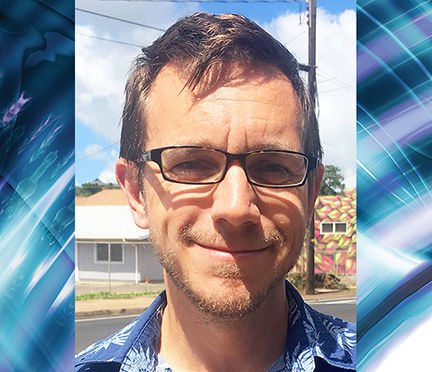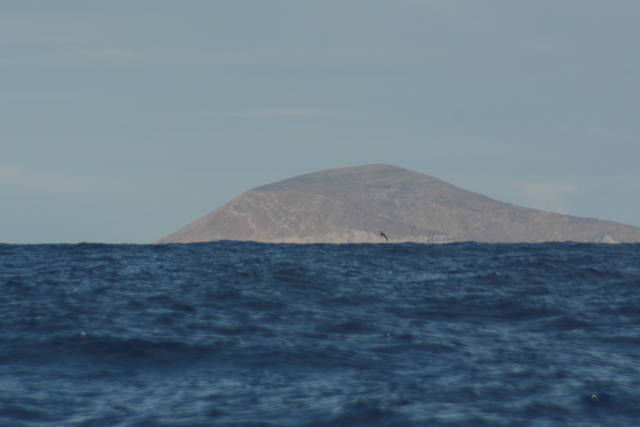LIHUE — The Lehua Island rat eradication project is on hold pending two permits, and the state permitting agency wants to make sure details are ironed out before giving the go-ahead.
Meanwhile, representatives from Island Conservation, the organization that is partnering with the state Department of Land and Natural Resources on the project, have come to Kauai to answer questions.
“I haven’t signed the aerial permits,” said Scott Enright, head of the state Department of Agriculture on Tuesday. “I want to make sure they’ve (DLNR) got it right before they go forward.”
He continued: “I have not missed the community angst that’s been expressed about the project and I want to make sure the applicant has got it right as it goes forward. If it’s not right, it won’t go forward.”
Dan Dennison, spokesman for DLNR, told TGI the department is in conversation with HDOA, with the goal of addressing concerns.
The department has also responded to concerns voiced by state Rep. Dee Morikawa, after a July 25 community meeting in Waimea left some questions unanswered.
“It seems the project will proceed and I hope that the aftermath is not what some of us fear,” Morikawa said.
In an Aug. 2 letter sent to HDOA and DLNR, Morikawa requested another meeting to field questions raised in the July 25 meeting.
“As a representative of the communities involved, it is my duty to bring attention to their concerns,” Morikawa told TGI on Tuesday. “ I have also heard from a few strong supporters for the project, who feel that I’m misinformed. I will admit I don’t know all the science, but I’ve heard concerns from all over the world and they may be valid. I have done all I can.”
Island Conservation wasn’t involved in the 2009 attempt to rid Lehua Island of invasive rats, but this time around they’ve jumped on board.
Heath Packard, communications director for Island Conservation, sat down with TGI on Tuesday afternoon to discuss the plan.
TGI: What is Island Conservation and how did the organization get involved with Lehua Island?
We began in 1994 in California and we do science-based conservation. We’re the world’s only global, non-government, nonprofit organization whose sole mission is to prevent extinctions by removing invasive species from islands.
So, in our 23 years we’ve done treatments on 66 islands. About 60 of those are completed and confirmed. Five or six of them are still pending confirmation because it takes a year or two to before you can confirm the presence or absence of rats.
It has to do with the reproductive cycle. If you leave one pregnant female, the island will be re-infested in a couple of years and you have to have more than one rat for detection, so you don’t know the results for a couple of years.
TGI: What is the success rate for these island rat eradication projects?
There’s a large field of conservation biologists and ecologists and land managers that do this kind of work. There have been some 600 operations, and we’ve done 66.
Of those 600 operations, somewhere on the order of 90 percent have been successful the first time. There’s always a risk of not getting every single last rat and there’s occasionally risks of new introductions.
For us, in our entire history we’ve only had two unsuccessful projects. One was Desecheo National Wildlife Refuge in Puerto Rico and the other was Wake Atoll. I’m pleased to say we just redid Desecheo and it was confirmed successful a couple months ago.
On Desecheo National Wildlife Refuge, we learned seasonality was an important factor — making sure you come in when the population is at its lowest and the alternative food sources are lowest. So we schedule during the dry season when we’re at the tropics.
Also, we extended the timeline between bait drops because if they’re too close together you won’t get every last rat — some could still have not fledged from the nest and gone foraging.
On Wake Island, there’s a bunch of built environments: Buildings, barracks, residents and those kinds of things. We were dealing with two kinds of rats and we were successful with one. The other persists. You need the residents to fully buy in and follow protocols to be successful — a few little mistakes are all you need for one pregnant female to survive.
TGI: What is your experience with the rodenticide diphacinone and marine environments?
The bait pellets are specifically designed to break down over a period of time in the environment. The moisture in the atmosphere on Lehua will break down the pellets into dust and particles into the substrate.
If it hits the water it breaks down in minutes or hours and it’ll precipitate out into the ocean floor and when it’s at the bottom, it’ll begin to degrade in a matter of weeks into hydrogen and carbon. There’s a limited time in which the bait is available for anything that might eat it in the water column.
We did some lab studies with bait and triggerfish — which are prominent out there. Scientific protocols were followed and we found no evidence of the triggerfish consuming or ingesting the toxicant.
TGI: How does the bait drop work?
The conditions have to be ideal — we need the right weather and the right wind conditions. There’s a go-no-go decision the day of the drop before daylight because they have to look at best available forecast and see conditions.
It’s aerial application by helicopter — so, there is a bait bucket that hangs down underneath the helicopter on a tether. It’s a modified agricultural hopper, like what’s used in farming.
We’ll use technology called Track Mapping, plus GIS and GPS so the pilot can see exactly where he or she has been and can lay a swath of toxicant that’s barely overlapped by the next one and theoretically get every square inch.
When they do the runs around the water perimeter, they’ll put a deflector on the rotor so it’s directionally shooting toward the land. It’s technical and precise and there are years of planning and design that goes into these operations.
TGI: Why choose the poison diphacinone over the alternative poison brodifacoum, listed in the Environmental Assessment?
Diphacinone has been used less frequently and has a lower efficacy rate. Of the 600 projects that have been done, the vast majority have been done with brodifacoum because it’s the most effective, but it also has a higher degree of risk.
Diphacinone was chosen by the partnership in response to the conservation culture here (on Kauai). They want a tool that works most of the time, but carries a little less risk.
We’ve worked with bait manufacturers and the partnership to redesign the bait to make it as palatable as possible for the rodents and they’ll do three distributions and hopefully get every rat.
We’re optimistic ant that the plan has been designed right and if it succeeds it could be a signal for innovation for using that lower risk toxicant elsewhere and more often.
TGI: How important is community input and communication?
We only do this work in partnership. That’s the only way you can do it. You have to work with the local land managers, the permitting agencies, the local communities, and the stakeholders.
I know there is an active debate in how well that was done in this case, but I’m here to facilitate those answers and talk with the community and county leaders about the project.






